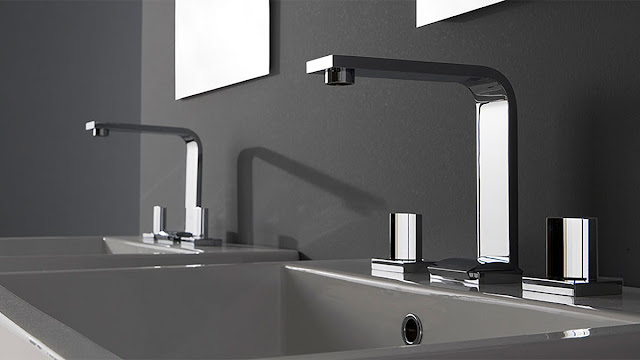
Looking for ways to keep your bathroom up to date with the latest design trends? If your bathroom follows a modern style – whether that’s modern farmhouse, modern minimalist, or mid-century modern, to name a few – you may be wondering what new trends would work best with these palettes.
Since it’s our passion to share the latest in-demand features and decor in modern home design, we’ve put together a helpful guide to modern bathroom trends for 2024. This way, as you consider updating or fully remodeling your bathroom in the next year, you can choose trends that will perfectly align with and complement the style you’ve already established.
Here are 3 interior trends for 3 different modern bathroom styles, including modern farmhouse, modern minimalist, and mid-century modern designs.
Interior Trends for a Modern Farmhouse Bathroom
Taking cues from a humble country getaway with contemporary touches, the modern farmhouse style is all about rustic charm. In 2024, here are several interior updates that you can easily incorporate to take your modern farmhouse bathroom to the next level:
Use reclaimed wood
Adding reclaimed wood in any area of the bathroom will create a moody, natural-looking ambiance in your bathroom, and it’s surprisingly easy to achieve! Whether you create an entire reclaimed wood accent wall, or you simply refinish your vanity with a reclaimed wood countertop, this type of feature will look great when paired with homier elements, like textiles in shades of white or cream.
Invest in a rustic vanity
Your vanity can truly set the tone for the entire space, and integrating a rustic vanity is a great way to foreground that modern farmhouse vibe. Choosing a vanity like this one, which includes a sliding barn door and open shelving for visible storage, offers fun storage solutions while still maintaining a modern, elegant look.
Add black accents
A final trend that will be seen in many modern farmhouse bathroom designs is adding black accents on elements like vanity hardware, lighting fixtures, sink faucets, and towel holders. Choosing flat black cabinet pulls, especially when you have white vanities or cabinetry, will create a crisp and modern graphic touch with plenty of contrast.
Include Vintage Accents
Add vintage or antique décor pieces to evoke a sense of history and nostalgia. Look for vintage signs, old-fashioned light fixtures, and flea market finds that fit the farmhouse aesthetic.
A classic clawfoot bathtub, whether it's cast iron, acrylic, or copper, is a perfect centerpiece for a farmhouse bathroom. Look for vintage or vintage-style clawfoot tubs to create an authentic, timeless feel.
Design Ideas for a Modern Minimalist Bathroom
With sleek fixtures and pared-down decor, the modern minimalist style maximizes beauty and efficiency with simple color palettes and a streamlined aesthetic. Next year, the following Scandinavian-inspired modern bathroom trends will look fantastic in any minimalist space:
Opt for a floating vanity
One of the undeniable features of a modern minimalist bathroom is a stunning, one-of-a-kind vanity that makes a statement. Opting for a floating vanity like this blue wall-hung modern bathroom cabinet is not only incredibly unique, but feeds into the minimalist trend of clean lines and modern illusion.
Install simple lighting
If your modern bathroom is filled with mirrors, it’s especially important to choose lighting that will maintain and complement a minimalist vibe. One of the coolest lighting trends for a modern minimalist space in 2024 are incandescent wall sconces, which cast soft, ambient light through its canning jar style. With these sconces framing your mirror(s), your lighting will embrace a vintage yet still Scandinavian style.
Create an open-style shower
An easy way to eliminate clutter is to remodel your shower so that there is no need for shower curtains, a tub, or other enclosure. Creating an open-style shower with a frameless sliding door is ideal for a modern minimalist bathroom. For the most minimal shower, you can construct a wet room where there is no door or enclosure whatsoever, but this is only recommended in larger spaces with adequate heating and air circulation.
Spring for high-quality
Minimalism doesn't have to mean that you skimped on the budget. When the focus of you design is simplicity, adding luxurious materials can really amp up you design. Choose high-quality materials like natural stone, glass, and stainless steel for a polished and luxurious look.
Hide your storage
Every bathroom needs storage. But you might find that lacking in a minimalist bathroom. To maintain a clutter-free appearance, integrate hidden storage solutions, such as recessed shelves or medicine cabinets. Work a large walk-in closet into the design so you have access to everything you need without adding clutter to the bathroom space.
Interior Tips for Mid-Century Modern Bathrooms
Finally, if your bathroom is mid-century modern, there are several trends arriving in 2024 that will work well with the muted tones, graphic shapes, and combination of natural and man-made materials that define this style.
Create geometrically-patterned walls
Geometric shapes or tiles lining the walls of your bathroom is a great way to create a layer of visual intrigue that complements a mid-century modern feel. Whether you create an accent wall of tile in only your shower, or you decide to tile all four walls of the space, rectangular tiles are one choice that will elevate any modern design technique.
Add a warm wooden vanity
Warm brown wood is one of the most common features in any mid-century modern home, so why not opt for a warm wooden vanity as the focal point of your bathroom in 2024? Contrasting well with white flooring or appliances, this type of vanity will underscore the natural element that is a notable staple of this design technique.
Install wood-framed rectangular mirrors
Another way you can incorporate natural materials into your mid-century modern bathroom is to give your mirrors a wooden facelift. Either by adding wood frames to your existing mirrors, or by installing new mirrors that have wooden surrounds, you can create a natural aesthetic that is also graphic and square by integrating rectangular mirrors.
Accent with brass or gold
Gold-toned metals were all the rage in the mid century and no mid-century modern bathroom is complete without it. Add a touch of luxury and sophistication with brass or gold hardware and fixtures on the faucets, towel racks, and cabinet handles.
Keep it warm
In addition to natural woods, stick to a warm and earthy color palette. Add a splash of bold accent color and you're in business. Popular colors from this era include mustard yellow, avocado green, teal, and various shades of brown.
Include a shapely bathtub
Choose a freestanding bathtub in a unique shape, like an egg or oval, to make it a focal point of the bathroom. These organic type shapes are a classic mid-century modern move your bathroom can't be without.
Looking for other affordable options as you set out on updating your bathroom? Here are some of our top tips for creating a luxurious-looking bathroom for cheap.







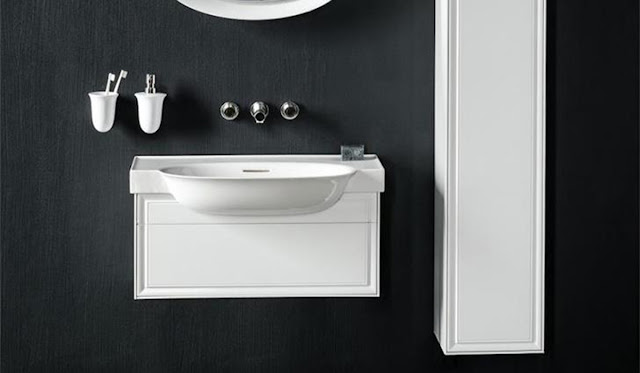




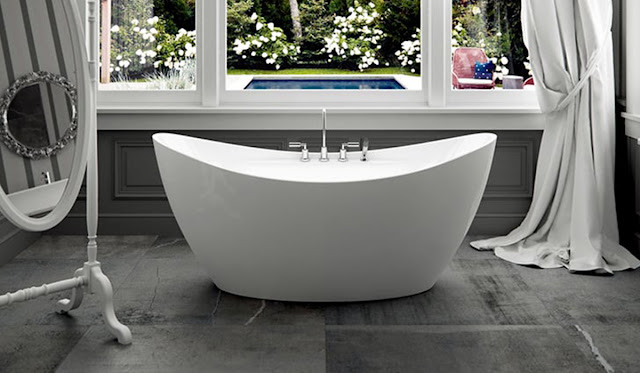
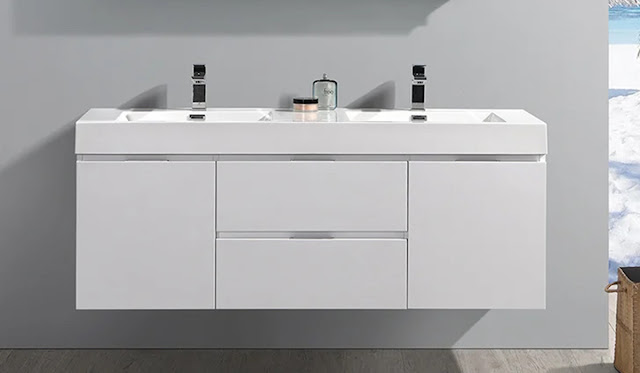


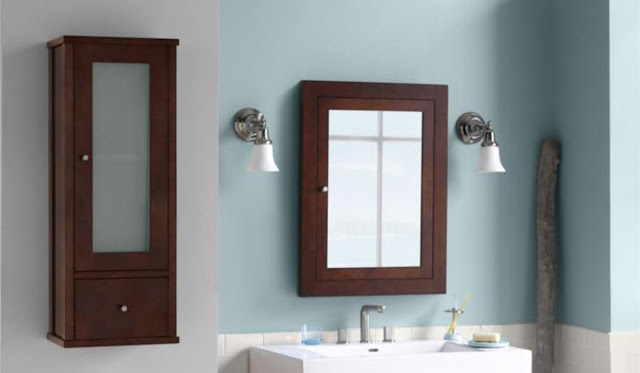



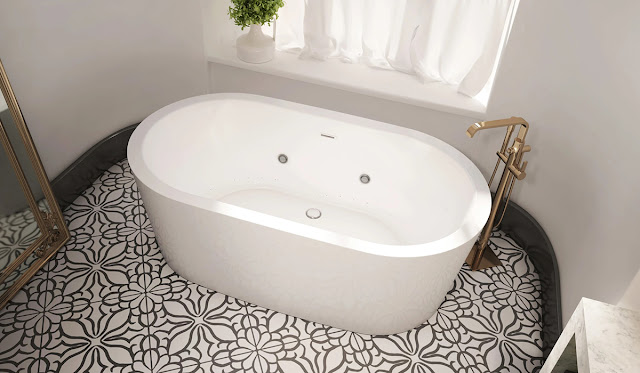

.jpg)
.jpg)
.jpg)
.jpg)
.jpg)
.jpg)
.jpg)
.jpg)
.jpg)
.jpg)


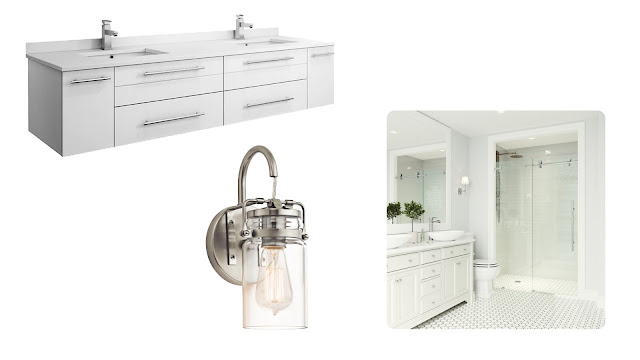

.jpg)
.jpg)
.jpg)




